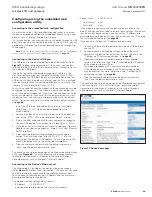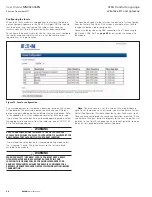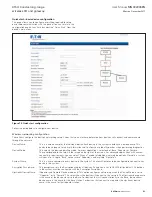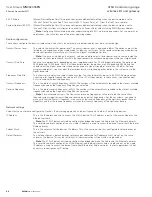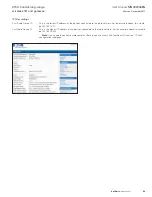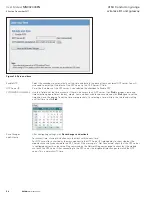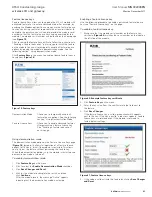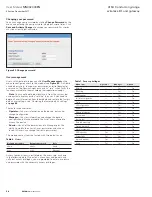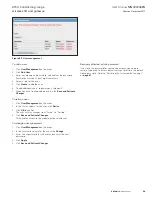
44
User Manual
MN032006EN
Effective December 2017
415U Condor-long-range
wireless I/O and gateway
EATON
www.eaton.com
Master IP Address
Sets the IP address of the DNP3 master station.
You do not need to set this parameter if the Connection Type is set to TCP Listen because the device will
accept connections from any DNP3 master station with the address you specified in the Master DP3 Address
field. If you are using TCP Listen and do not want to select a DNP3 master IP address, clear the Use checkbox
to disable the Master IP Address.
The Master IP Address parameter is required if the Connection Type is set to UDP or TCP Dual.
Note
: You also need to set the devices IP address to match the requirements of your system. For more
information, see “Address configuration” on
page 43
.
Advanced port settings
DNP3 protocol typically uses TCP and UDP port number 20000
for all communications. You may need configure nonstandard port
numbers to match the requirements of your system.
To configure DNP3 ports, click DNP3 in the project tree and then
click the Advanced tab.
Figure 68. DNP3 advanced port settings
Outstation Port
Sets the TCP or UDP port number to use for the DNP3 outstation (this device). The standard port number for DNP3 is
20000. You only need to change this if your system uses a non-standard port number.
Master Port
Sets the TCP or UDP port number of the master station. If the Connection Type is set to UDP or TCP Dual, you need to
set this value to the port number that the DNP3 master uses to receive incoming connections. This parameter is not
available if the Connection Type is set to TCP Listen.
Initial UDP Port
Sets the UDP port that the remote station uses to send UDP messages to the master station before there is a
connection from the master station. This parameter is only available when the Connection Type is set to UDP.
I/O configuration
You can change the way that I/O data is reported by the 415U-2
DNP3 outstation. By default, all the on-board I/O report as polling
class 0 only (integrity poll). To enable event reporting of the I/O, you
need to configure the I/O polling class. You may also want to change
the dead band parameter for analog and counter inputs, and scaling
for analog inputs and for analog outputs.
To configure a DNP3 I/O, click the I/O type under
DNP3
in the
project tree. There are five supported I/O types:
•
Binary Inputs
•
Binary Outputs
•
Counters
•
Analog Inputs
•
Analog Outputs
Note
: The 415U-2 has a large number of registers that are not
listed in the I/O configuration. By default, only physical I/O points
can be accessed from the DNP3 master. You can add additional
registers to the DNP3 point list by adding entries to the appropriate
I/O configuration section.
When you add 115S Expansion I/O modules to a 415U-2 device
configuration, the I/O of the 115S device are automatically added to
the DNP3 I/O list. You can add 115S expansion I/O devices by clicking
IO in the MConfig project tree. For more information, see “Adding an
expansion I/O to MConfig” on
page 30
.
Every DNP3 I/O needs to be configured with a polling class and
register number:
•
Polling Class
—The following options are available for polling
class:
•
No Class
—Points with this class can only be retrieved via an
explicit read from the master. They are not reported in response
to class polls from the master
•
Class 0
—Points with this class have their current value
reported in response to a class 0 poll from the master (integrity
poll). No events are recorded for this class.
•
Class 1, Class 2, Class 3—
Points in these classes are reported
to the master station with time-stamped events in response to
a corresponding poll from the master. Additionally, they have
their current value reported in response to a class 0 poll in the
same manner as for points configured with polling Class 0.




















